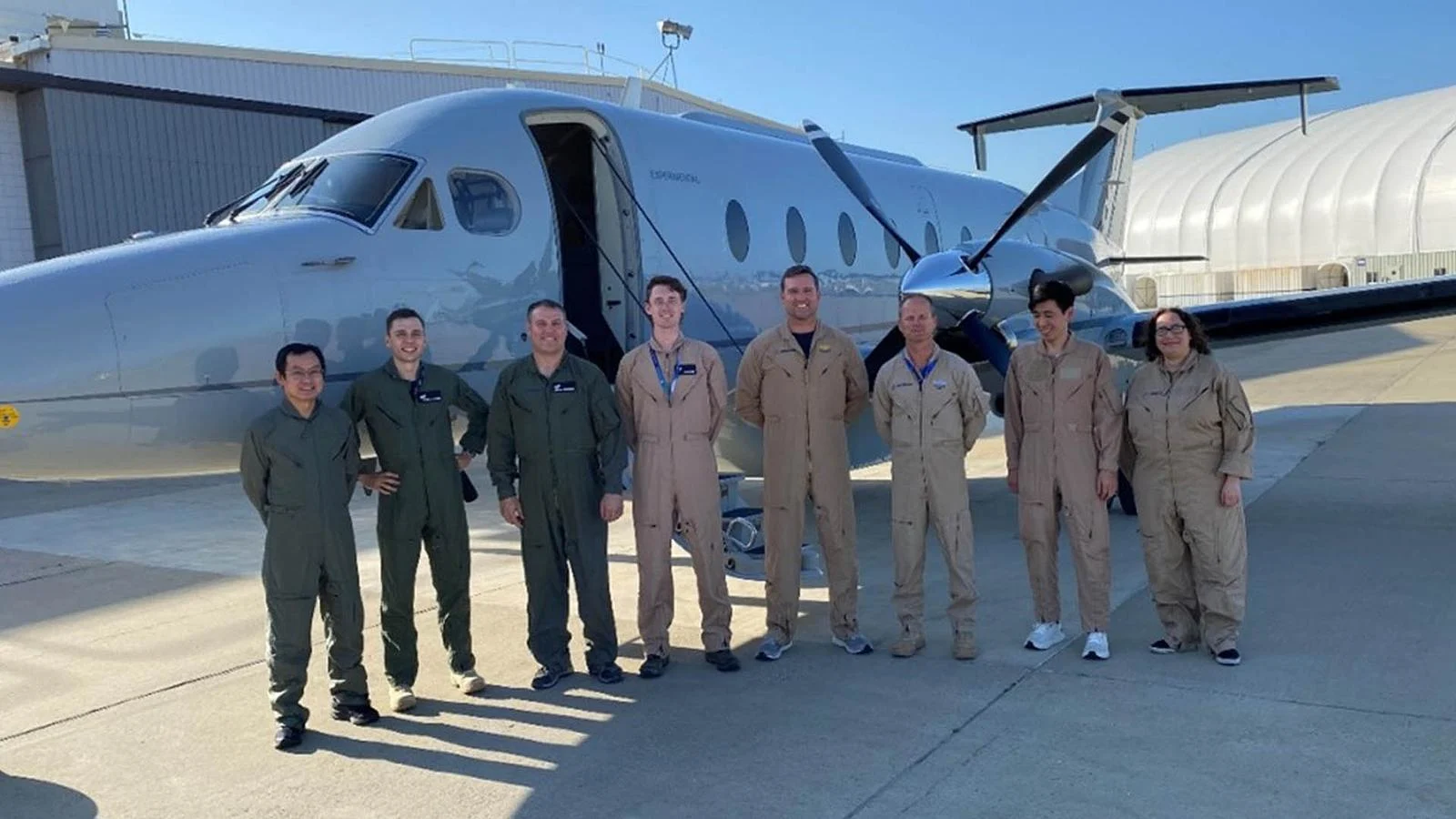Insider Brief
- Boeing successfully completed a four-hour flight test using a quantum inertial measurement unit (IMU) for navigation without GPS, showcasing real-time capabilities.
- The six-axis quantum IMU, developed in collaboration with AOSense, uses atom interferometry for precise rotation and acceleration detection, achieving unparalleled navigational accuracy.
- The successful test marks a significant milestone in aviation technology, with Boeing demonstrating the potential for quantum sensors to provide reliable navigation in GPS-denied environments.
- The Boeing-AOSense Flight Test Team completes its quantum navigation flight test in May. (Boeing photo)
Boeing has successfully completed a landmark flight test, demonstrating the potential of quantum sensors to enable aircraft navigation without relying on GPS, according to a Boeing News Now post.
The four-hour test, conducted on a Beechcraft 1900D, showcased the real-time capabilities of a six-axis quantum inertial measurement unit (IMU) integrated into a full inertial navigation system. This significant advancement underscores Boeing’s commitment to pioneering cutting-edge technologies that enhance aviation safety and reliability, according to the post.
Quantum Navigation
The flight test took place out of St. Louis Lambert International Airport in St. Louis, Missouri, and involved the quantum IMU operating successfully through takeoff, landing and multiple in-flight maneuvers. The results indicate that quantum sensors, which have been confined to laboratory research for years, have taken a step toward deployment in real-world aviation scenarios, producing precise navigational data essential for practical applications.

“Boeing is extremely proud to be leading the development of quantum technology that will improve the safety of flight by enabling precision navigation under all conditions,” said Ken Li, Boeing Principal Senior Technical Fellow.
The IMU, designed and built by AOSense in collaboration with Boeing, uses a quantum sensing technique called atom interferometry, according to the post. This method detects rotation and acceleration using atoms, offering unparalleled accuracy and precision without the need for a GPS reference. Each of the three quantum inertial sensors within the IMU measures single-axis accelerations and rotations, tracking the airplane’s path from its initial position.
Technological Integration and Testing
Boeing engineers played a crucial role in integrating the quantum inertial sensor with additional sensors and hardware to ensure reliable in-flight performance. The team considers the outcome a pioneering quantum-enabled navigation sensor, and a new leap in aviation technology.
“The ability to safely operate in GPS-denied environments is critical to both defense and commercial applications,” stated Todd Citron, Boeing Chief Technology Officer. “This flight test shows Boeing’s innovative approach to leveraging quantum technologies for operationally relevant challenges.”
The rapid development cycle, transitioning from laboratory settings to in-flight operations within 15 months, highlights the concerted efforts of Boeing and AOSense, as reported by the Boeing News Now. The teams conducted a series of laboratory, ground vehicle and flight tests to refine and enhance the sensor’s capabilities and reliability. This iterative process has been crucial in advancing the technology from single-axis laboratory sensors to a fully operational quantum IMU.
Future Implications and Commercial Viability
The successful demonstration of the quantum IMU’s capabilities holds significant implications for the future of aviation and beyond.
This is not an innovation can only be used for the militaries and national defense organizations, although they will likely be key customers. Commercial aircraft have also been subject to jamming and spoofing operations that have affected their ability to navigate safely. Quantum sensors, then, can address these potential disruptions in current GPS or other navigational systems, providing a reliable alternative that can navigate aircraft on most commercial routes without GPS for the entirety of the flight.
“We designed our Quantum IMU for robust operation in harsh environments and are extremely pleased to confirm that during the flight test, the sensor performed along all input axes much as we predicted,” said Brenton Young, President of AOSense.
The company’s extensive experience in developing quantum sensors since 2004 has been instrumental in achieving this breakthrough.
Jay Lowell, Boeing Principal Senior Technical Fellow, emphasized the broader potential of this technology. “Such rapid advancements indicate great promise for quantum sensors to be part of the next generation of navigation sensors. This flight test is a historic first step in that direction.”


















